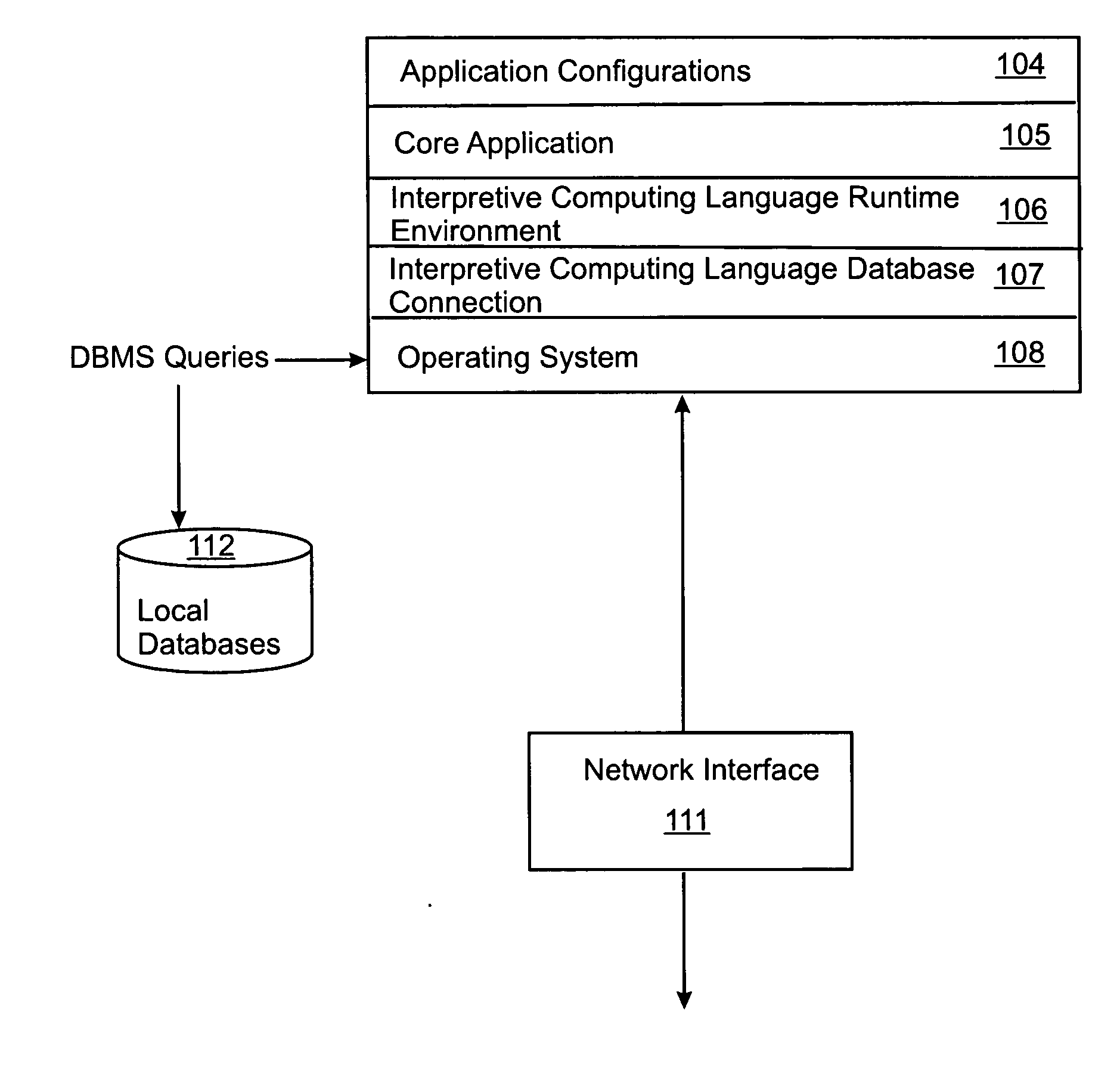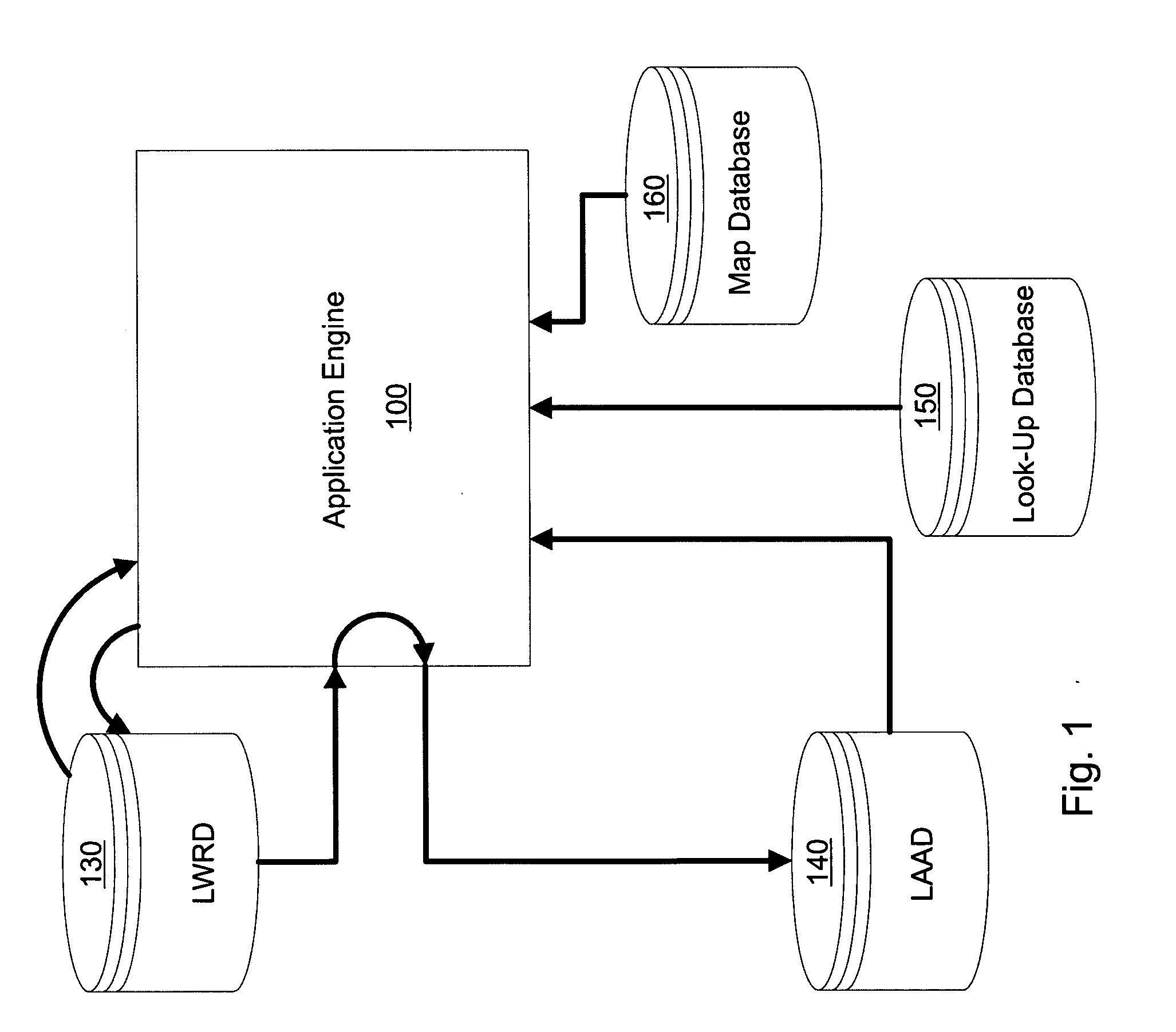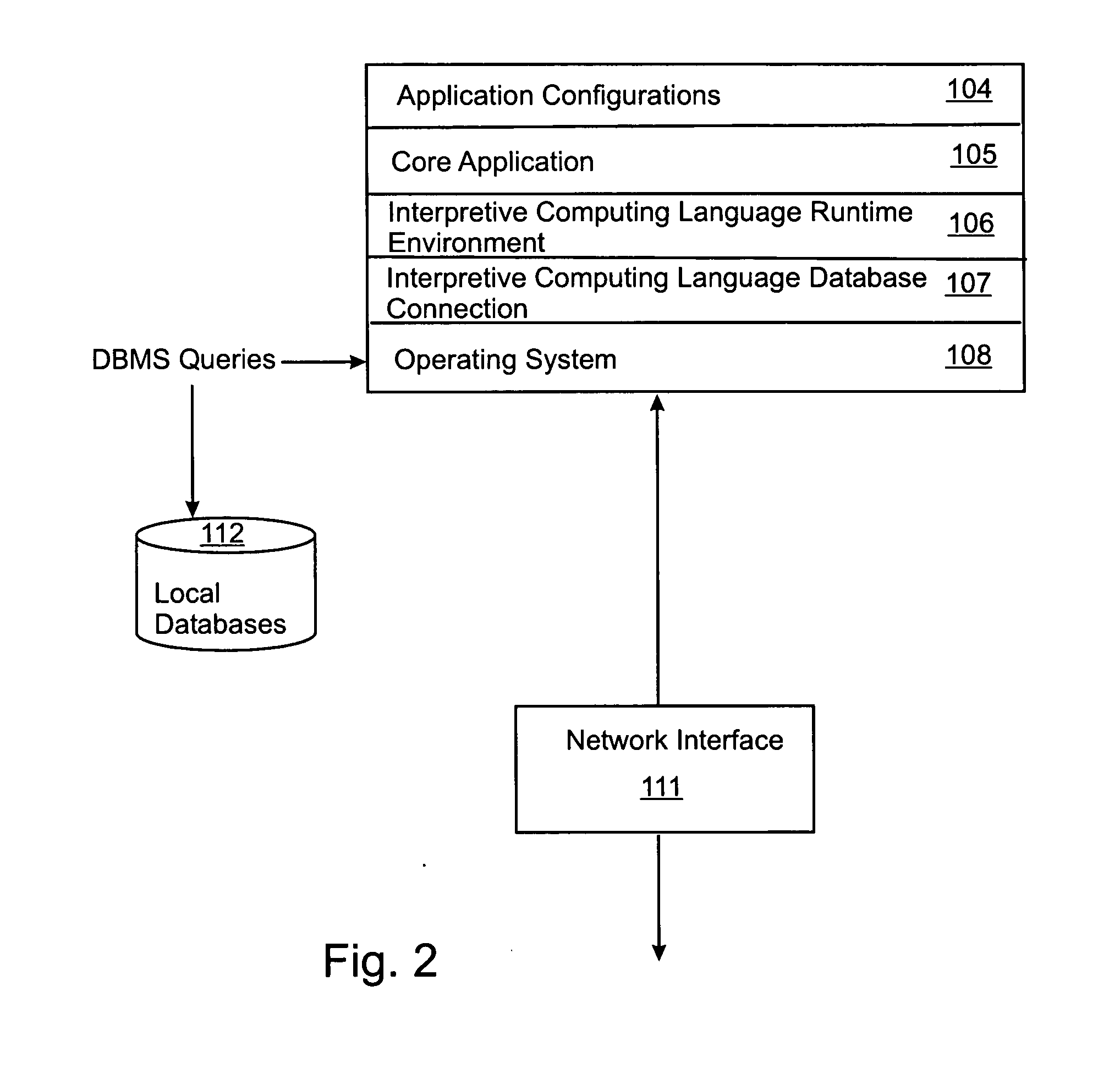Method and software for mobile data collection having managed workflow
a mobile data and workflow technology, applied in the field of mobile data collection and maintenance of enterprise data, can solve the problems of inability to integrate data collection methods, limited flexibility of individual users, and unsuitable connected network environments for data collection, so as to speed up synchronization, reduce the quantity of data transmitted, and reduce storage space
- Summary
- Abstract
- Description
- Claims
- Application Information
AI Technical Summary
Benefits of technology
Problems solved by technology
Method used
Image
Examples
Embodiment Construction
[0048] Referring to FIG. 1, the mobile computing device (preferably a tablet PC with a pen-based input device) has stored on its data storage device (preferably a hard disk drive) application software engine 100. On startup, the application engine 100 first synchronizes with the network, if available, to download work request and associated attribute information from the WRD and creates a locally-saved LWRD 130. The application engine 100 then updates or creates the LAAD 140 containing current attribute information relating to work requests stored in the LWRD 130. The application engine 100 includes code to produce a form-based graphical user interface on a visual display of the mobile computing device. The application engine 100 generates the forms by accessing a look-up database 150 that contains pre-defined categories for the user to choose from when entering data into the form (for example, pre-defined available condition states of the asset being assessed in a particular work r...
PUM
 Login to View More
Login to View More Abstract
Description
Claims
Application Information
 Login to View More
Login to View More - R&D
- Intellectual Property
- Life Sciences
- Materials
- Tech Scout
- Unparalleled Data Quality
- Higher Quality Content
- 60% Fewer Hallucinations
Browse by: Latest US Patents, China's latest patents, Technical Efficacy Thesaurus, Application Domain, Technology Topic, Popular Technical Reports.
© 2025 PatSnap. All rights reserved.Legal|Privacy policy|Modern Slavery Act Transparency Statement|Sitemap|About US| Contact US: help@patsnap.com



